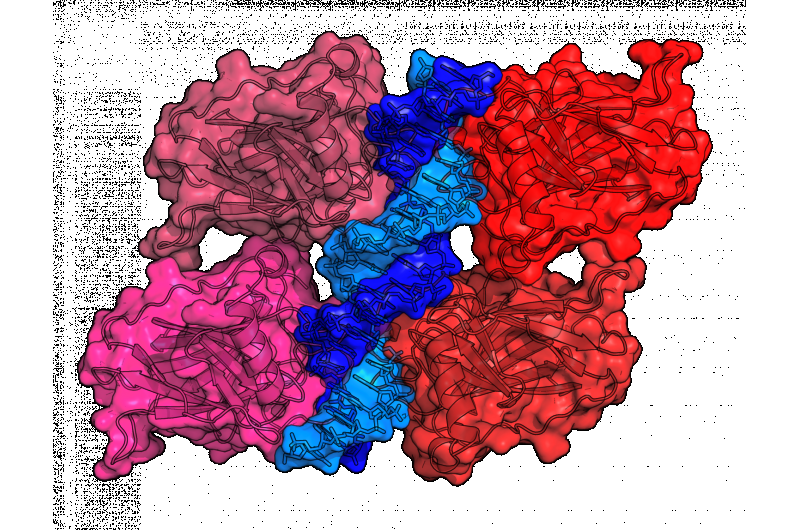New insight illuminates how cells respond to stress

Duke Cancer Institute scientists have described a previously unknown series of steps that cells undergo when stressed, adding crucial information to the understanding of DNA damage that is at the heart of research into aging and cancer.
The finding is reported online in the journal Cancer Discovery.
"We found a whole new pathway that helps cells deal with DNA damage when they are exposed to radiation, chemicals and perhaps oxidative stress," said senior author Michael Kastan, M.D., Ph.D., executive director of the Duke Cancer Institute. "This insight helps explain how, after DNA damage, cells are programmed to live, die, mutate or go into a state of senescence, in which they stop dividing."
The findings from Kastan and colleagues arose from studies of the p53 gene, which is involved in the regulation of cell cycles and programmed cell death. When functioning properly, p53 works to stop the formation of tumors, and it is the most commonly mutated gene in human cancers. Kastan's lab discovered its critical role in modulating cellular responses to DNA damage more than 25 years ago.
Scientists have some understanding of how p53 functions, but the finding from the Duke team adds a new insight that spotlights the role alternative gene splicing plays in affecting proper function. Alternative splicing occurs when a single gene codes for multiple proteins.
The researchers observed this mechanism during exposure of cells to the type of radiation in x-rays, but the findings have broad implications for other forms of cellular stress and DNA damage. The investigators also showed that many other important cellular genes appear to be regulated by this pathway, and additional studies are underway.
"This newly identified pathway induces very specific types of changes in p53 and other gene products," Kastan said. "This raises the possibility that we could selectively modulate this change, while preserving the beneficial actions of p53, as an approach to reduce some of the side effects of radiation therapy."
More information: Jing Chen et al. Identification of a DNA Damage-induced Alternative Splicing Pathway that Regulates p53 and Cellular Senescence Markers, Cancer Discovery (2017). DOI: 10.1158/2159-8290.CD-16-0908
















